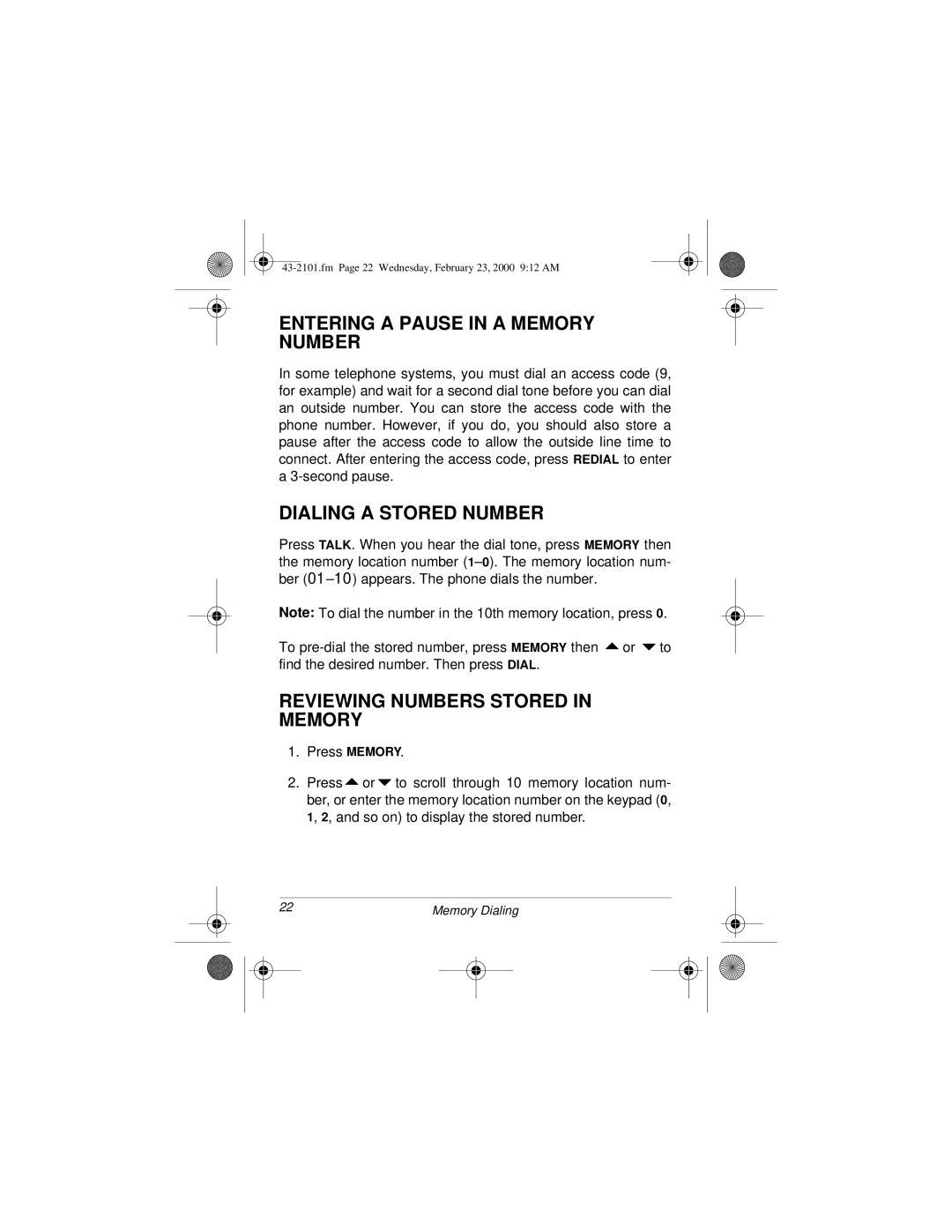ET-2101 specifications
The Radio Shack ET-2101 is a pioneering model in the world of consumer electronics, embodying the innovative spirit of its time. Launched in the mid-1980s, this electronic device serves as both a calculator and a programmable device, capturing the attention of tech enthusiasts and everyday users alike.One of the key features of the ET-2101 is its compact design, which makes it incredibly portable. Weighing just a few ounces, it easily fits into a pocket or bag, allowing users to carry it with them wherever they go. The sleek interface, combined with its lightweight structure, signifies a step forward in personal computing technology, making it accessible for everyone from students to professionals.
The ET-2101 is equipped with a calculator function that supports a wide range of mathematical operations, including basic arithmetic as well as more complex functions. This versatility made it an essential tool for both academic and professional environments. The device features a clear and easy-to-read LCD display, which ensures that users can easily view calculations without straining their eyes.
Another remarkable aspect of the ET-2101 is its programmability. Users can write simple programs to perform repetitive tasks or calculations, significantly increasing productivity. This feature opened up new possibilities for utilizing technology to solve practical problems, enabling creative and technical minds to experiment with coding in a user-friendly environment.
The ET-2101 operates on a standard battery, ensuring that it can be used anywhere without the need for an electrical outlet. This independence from power sources not only enhances its portable design but also showcases Radio Shack's commitment to convenience and usability.
In terms of connectivity, the ET-2101 includes a proprietary interface that allows users to connect it with other devices or computers of the era, facilitating data transfer and expanding its functionality. This ability to integrate with other technologies was essential in promoting a more interconnected tech ecosystem.
In conclusion, the Radio Shack ET-2101 is a remarkable product that underscored the evolution of personal technology in the 1980s. With its functional design, robust calculator features, programmability, and connectivity options, it not only met the demands of its time but also shaped the future of portable computing devices. Its legacy continues to inspire innovations in the field of electronics, reminding us of the advancements that have transformed our daily lives.

